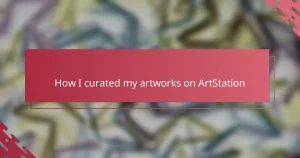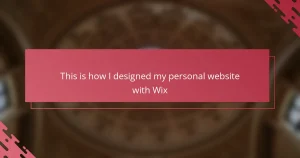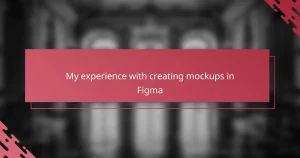Key takeaways
- Curate your portfolio with purpose, focusing on quality and coherence to better connect with your target audience.
- Enhance portfolio design with intuitive navigation, optimal image loading, and customized elements that reflect your artistic voice.
- Incorporate personal branding strategies to create a consistent visual identity and enhance viewer connection through storytelling.
- Showcase your portfolio transformation with reflective insights, highlighting growth and intentional design changes to engage your audience.
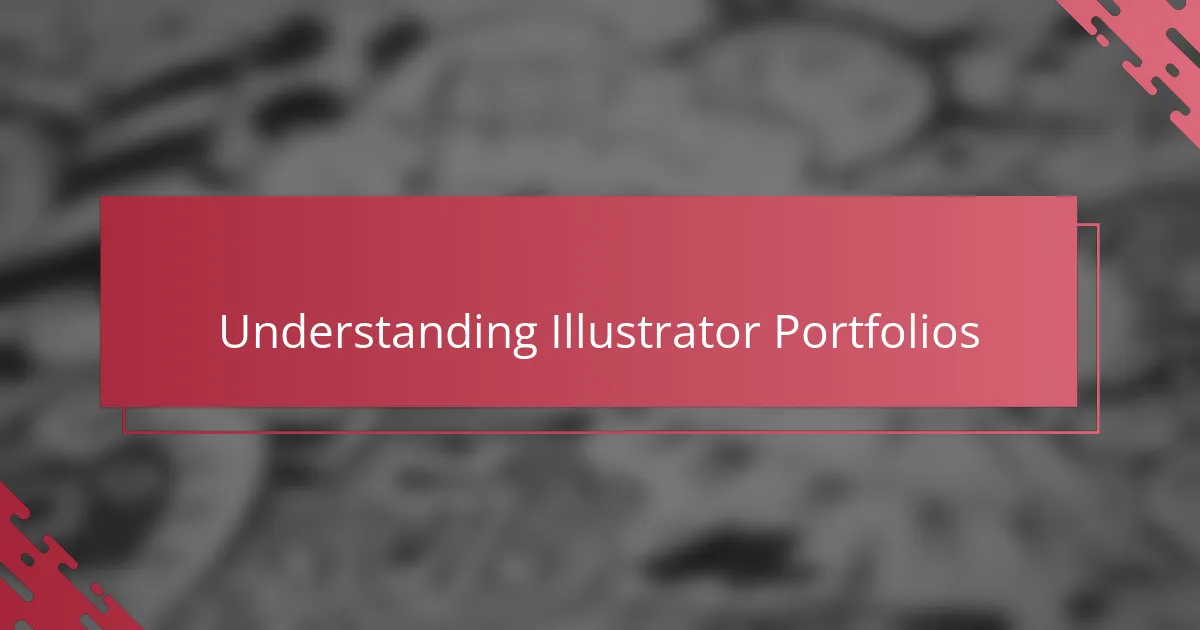
Understanding Illustrator Portfolios
An illustrator portfolio is more than just a collection of images—it’s a visual story that reveals your style, skills, and creative journey. I remember the moment I truly grasped this: my portfolio wasn’t just about showing what I could do, but who I was as an artist. It made me wonder, what story do I want my work to tell?
When I first started, I thought quantity was key, but I learned that curation matters more. Each piece in my portfolio needed a purpose and had to connect with the kind of clients or projects I aimed for. Have you ever felt overwhelmed by your own work? That was me—until I focused on quality and coherence.
Understanding your audience is crucial too. Your portfolio should speak directly to the type of job or collaboration you want. This insight shifted how I presented my work, making it more targeted and effective. Don’t we all want our art to resonate on a deeper level? That’s exactly what a well-crafted illustrator portfolio achieves.
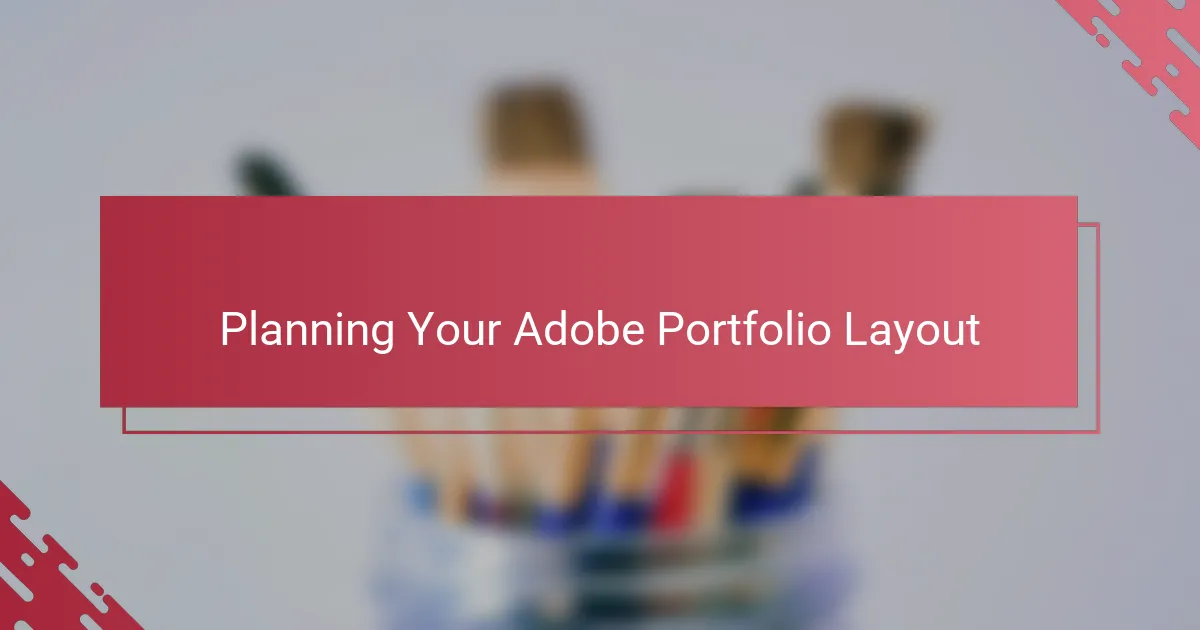
Planning Your Adobe Portfolio Layout
Planning your Adobe Portfolio layout felt like piecing together a puzzle for me. I quickly realized that a clean, intuitive design wasn’t just about aesthetics—it shaped how viewers experienced my work. Have you ever clicked through a site only to feel lost or distracted? That confusion was something I wanted to avoid at all costs.
Deciding on the order and grouping of projects became a real turning point. Instead of random placements, I chose to lead with my strongest, most telling pieces, creating a natural flow that guided visitors through my creative evolution. It’s amazing how much the right sequence can influence a viewer’s impression.
I also learned to pay close attention to white space and navigation. At first, I crammed too much in, hoping to show everything at once. But stepping back and letting each piece breathe made my portfolio feel more professional—and honestly, it gave me more pride when sharing it. Doesn’t well-planned simplicity just make your work stand out more?
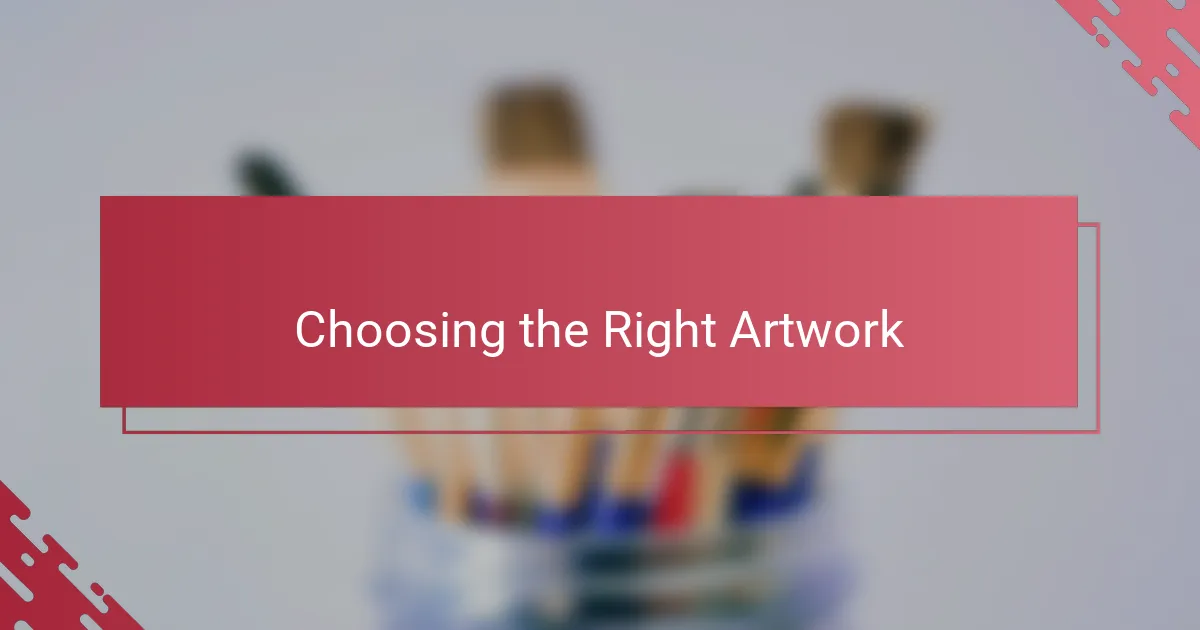
Choosing the Right Artwork
Choosing the right artwork felt like a crossroads in my portfolio journey. I used to include every piece I was proud of, but then I realized it diluted the message I wanted to send. Have you ever looked at your own collection and wondered which pieces truly represent who you are as an illustrator?
I found that focusing on versatility while maintaining a consistent style made my portfolio more compelling. It wasn’t about showing every skill under the sun, but selecting works that showcased my strongest strengths and the kind of projects I wanted to attract. This balance helped me tell a clearer story through my art.
Sometimes, I asked myself, “Does this piece fit the narrative I’m building?” If the answer was no, it didn’t make the cut. This filter made my portfolio feel intentional and polished, which ultimately boosted my confidence every time I shared it. Isn’t it powerful when your work speaks confidently for you?
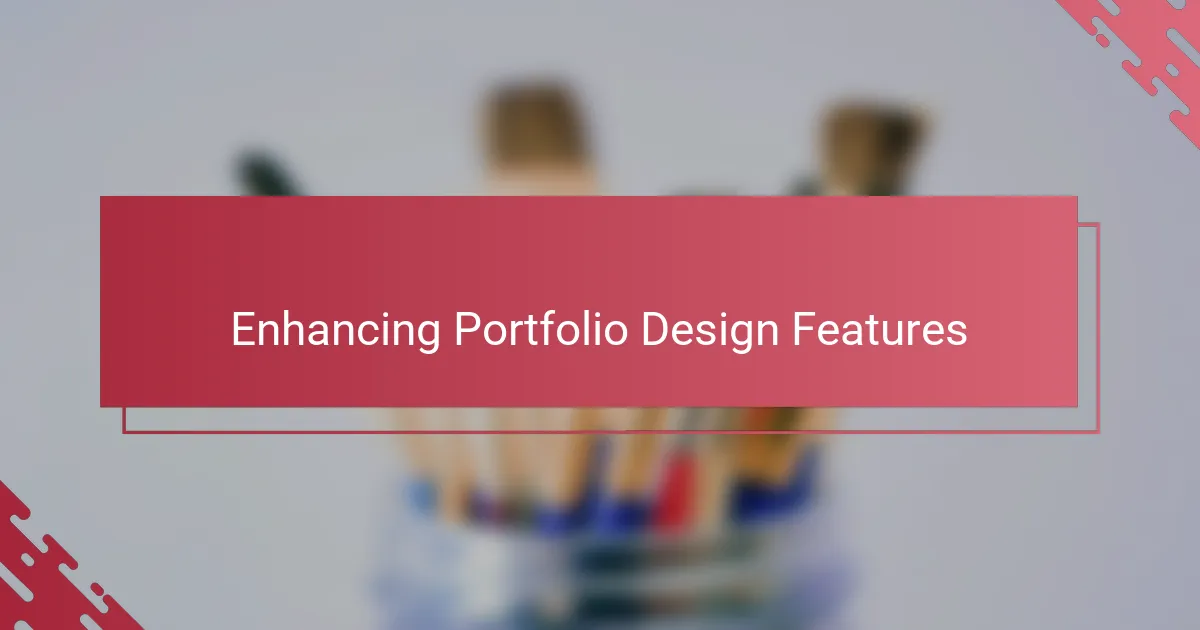
Enhancing Portfolio Design Features
Enhancing the design features of my Adobe portfolio felt like adding the finishing touches to a painting. I experimented with subtle animations and hover effects that didn’t distract but instead invited viewers to engage more deeply with my illustrations. Have you ever noticed how a small movement can change the entire feel of a page? That’s exactly what these enhancements achieved for me.
I also focused on customizing typography and color schemes to reflect my artistic voice. It wasn’t just about picking pretty fonts, but choosing styles that complemented my work’s mood and personality. When I saw how these elements harmonized with my pieces, it made my portfolio feel like an extension of myself rather than just a display.
Finally, I integrated intuitive filtering options that allowed viewers to navigate through my work by theme or style. This interactive approach made the experience more user-friendly and showed I cared about how others connected with my art. Don’t you think making it easy for people to find what they’re looking for speaks volumes about your professionalism? For me, it was a game-changer.

Optimizing for Adobe Platform
Optimizing for the Adobe platform was a game changer for me because it meant tailoring my portfolio to fit seamlessly within their ecosystem. I discovered that leveraging Adobe Portfolio’s built-in sync with Lightroom and Behance streamlined the update process, making it effortless to keep my work fresh and relevant. Have you ever struggled with juggling multiple platforms? This integration saved me countless hours and kept my portfolio coherent across channels.
I also realized the importance of image optimization within Adobe Portfolio. Uploading high-resolution files initially slowed down my site, which was frustrating to both me and my visitors. By carefully compressing images without losing detail, I maintained visual quality while speeding up load times—something I never knew could impact a visitor’s impression so much. Isn’t it incredible how small technical tweaks can elevate the entire user experience?
One feature I came to appreciate deeply was Adobe Portfolio’s responsive design. Seeing my illustrations display perfectly on phones, tablets, and desktops made me proud and confident to share my work anywhere. It made me think: if my art can look great no matter the screen, then my chance to connect with potential clients increases exponentially. Have you checked how your portfolio looks on different devices lately? It might surprise you.
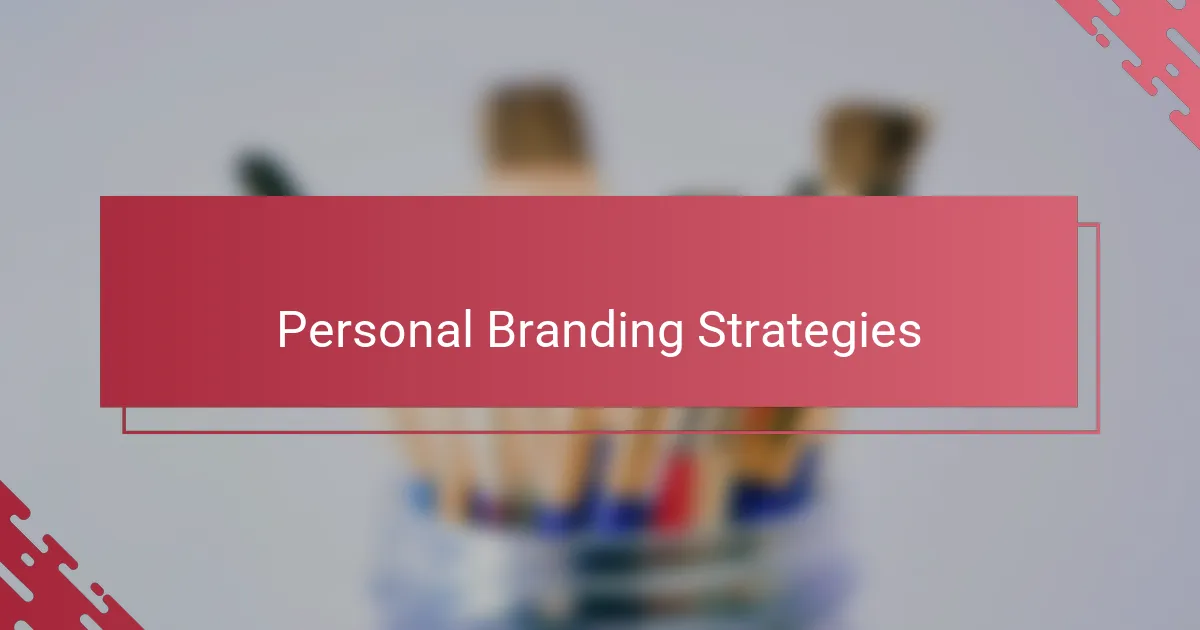
Personal Branding Strategies
Personal branding felt like the invisible thread weaving my portfolio into a memorable story. At first, I didn’t realize how much my choices—colors, fonts, even tone—reflected who I was beyond the images. Have you ever thought about what vibe your portfolio sends before someone even clicks on a piece? That subtle impression stuck with me and made me intentional about every detail.
Building a consistent visual identity became my compass. I chose a palette and style that felt authentic, something I could replicate not just on my portfolio but across social media and client communications. It wasn’t about being flashy; it was about creating trust and recognition. When I saw clients recall my work simply by the look and feel, I knew I was onto something.
Another strategy was weaving my personal story into the portfolio narrative without overshadowing my art. Sharing quick background notes about my inspirations or creative process helped visitors connect on a human level. Have you noticed how stories make art feel alive? For me, those small touches turned a static collection into an invitation to engage and remember.

Showcasing Your Portfolio Transformation
Showing the transformation of my portfolio wasn’t just about adding new pieces—it was about highlighting the evolution of my style and approach. I chose before-and-after snapshots that told a story, letting viewers see the growth and decisions behind each change. Have you ever felt proud when someone actually asks about the journey behind your work? That’s the kind of connection I wanted to spark.
I also made sure to weave in reflections alongside the visuals. Sharing why I removed certain works or reworked designs made the transformation feel intentional and thoughtful, not random. It’s funny how much vulnerability can strengthen your portfolio’s impact; opening up about challenges invited empathy and respect from my audience.
Finally, organizing these changes in a clear, engaging way was key. A simple timeline or project case study format helped guide viewers through my progress without overwhelming them. When I first saw these elements come together, I realized that showcasing transformation isn’t just about showing new art—it’s about telling a compelling story that resonates. Wouldn’t you agree that a portfolio with a story behind it feels more alive?
